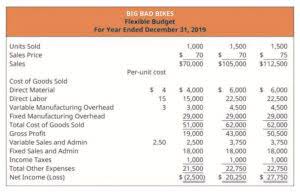
The inventory account would be debited $5,000 and the cash account would be credited $5,000. This would result in a $5,000 increase in the inventory account and a $5,000 decrease in the cash account because they are both asset accounts. These entries would be made in the journal and/or ledger with the date of their occurrence. It can be helpful to explore a brief example of the general transaction and recording in the accounting process. Imagine that furniture company XYZ recently bought a new piece of machinery. The accountant, Shelby, has entered into the accounting system in the form of a journal entry.
Doing it this way means your bank statement reflects all (or certainly most) of your business transactions. Then simply copying them across to your accounting records will be a great start. You can even link online accounting software to your bank account so the data flows through automatically. If a supplier invoice is received, the accountant can record it in the accounts payable section of any accounting software. This will create a journal entry that will credit the accounts payable and debit the expenses.
Income Statement
In other words, transactions that are not cash or credit are non-cash transactions. Therefore, it can be said that any transaction that is entered into by two persons or two organizations with one buying and the other one selling is considered an external transaction. The types of accounting transactions may be based on various points of view. The first one that we will discuss is the types of accounting transactions according to institutional relationships, namely external and internal transactions. Edisun Power has broad experience in the realization and purchase of both national and international projects, thanks in part to its strategic partnership with the Smartenergy Group. Currently, the company owns 36 solar power plants in Switzerland, Germany, Spain, France, Italy and Portugal.
- The type of journal an accountant uses will depend on the type of business and their accounting software.
- Having a debit balance in the Cash account is the normal balance for that account.
- It is a good idea to familiarize yourself with the type of information companies report each year.
- Revenue, liability, and equity accounts experience the reverse, an increase with a credit entry and a decrease with a debit entry.
- Therefore, it can be said that any transaction that is entered into by two persons or two organizations with one buying and the other one selling is considered an external transaction.
- They are the basis of all financial accounting technical guidance.
Then, using this cost information, a company may decide to switch to a lower quality, less expensive type of raw materials. Generally speaking, however, attention to detail is a key component in accountancy, since accountants must be able to diagnose and correct subtle errors or discrepancies in a company’s accounts. The ability to think logically is also essential, to help with problem-solving. Mathematical skills are helpful but are less important than in previous generations due to the wide availability of computers and calculators.
Recording accounting transactions without losing your mind
The next transaction figure of $4,000 is added directly below the $20,000 on the debit side. This is posted to the Unearned Revenue T-account on the credit side. On January 3, there was a debit balance of $20,000 in the Cash account. Since both are on the debit side, they will be added together to get a balance on $24,000 (as is seen in the balance column on the January 9 row).
In the example above, the consulting firm would have recorded $1,000 of consulting revenue when it received the payment. Even though it won’t actually perform the work until the next month, the cash method calls for revenue to be recognized when cash is received. When the company does the work in the following month, no journal entry is recorded, because the transaction will have been recorded in full the prior month.
What is a Transaction in Accounting?
The next transaction figure of $2,800 is added directly below the January 9 record on the debit side. The new entry is recorded under the Jan 10 record, posted to the Service Revenue T-account on the credit side. Debits always increase asset and expense accounts, while debits always decrease them. The converse is true for liability, equity, and revenue accounts; credits increase them, and debits decrease them. These concepts help to ensure that the accounting equation is always in balance. The first thing any accountant will learn is recording a transaction in the form of a journal.

Another key element to understanding the general ledger, and the third step in the accounting cycle, is how to calculate balances in ledger accounts. The Payroll management system is used by the accounts to manage employee payments recording transactions for salary and other incentives. The amount to be paid and the hours worked by the employee are added in the software along with other relevant information. The software then creates a journal where the cash account gets credited.

Commentaires récents